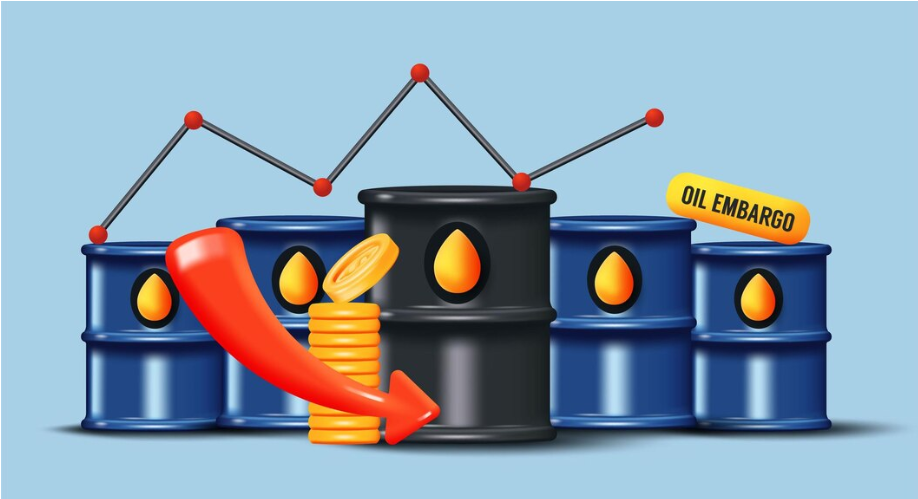Oil and gas prices are like the heartbeat of the global economy—they pump energy into industries, fuel transportation, and even influence what you pay at the grocery store. But lately, this heartbeat has been skipping beats, and it’s shaking up markets worldwide. Let’s dive into how the energy economy, driven by oil and gas prices, is reshaping financial markets, industries, and our daily lives.
Why Oil and Gas Prices Matter
Let’s face it, oil and gas are everywhere in our lives. They power cars, heat homes, and even play a role in making the products we use every day. But what happens when these prices start to swing wildly? It’s a ripple effect that impacts businesses, investors, and everyday consumers.
High prices can mean higher costs for transportation and manufacturing, while low prices can hurt oil-exporting countries. Either way, changes in the energy economy are something we all feel—whether directly or indirectly.
What’s Driving Oil and Gas Price Changes?
Oil and gas prices don’t just go up and down randomly. Here are some key factors shaking things up right now:
1. Geopolitical Tensions
Ever notice how conflicts in oil-producing regions seem to push up prices? Political unrest in places like the Middle East or sanctions on major exporters like Russia can disrupt supply chains and send prices soaring.
2. Supply and Demand Dynamics
When economies grow, demand for oil and gas skyrockets, driving prices higher. But when there’s a slowdown, like during the COVID-19 pandemic, demand plummets—and so do prices. It’s a classic case of economics 101.
3. Shift to Renewable Energy
The push for greener energy sources is reshaping the energy economy. Governments are investing in renewables, and big companies are pledging to go carbon-neutral. While this is great for the environment, it creates uncertainty for traditional oil and gas markets.
How Oil and Gas Prices Are Reshaping Markets
Here’s where things get interesting: changes in oil and gas prices don’t just impact energy companies—they ripple through the entire economy.
1. Stock Market Volatility
When oil prices jump or crash, you’ll see the effects in the stock market. Energy stocks react first, but the shockwaves hit transportation, manufacturing, and even retail sectors. Investors turn to platforms like Fxpricing to track these shifts in real-time and adjust their strategies.
2. Inflation and Consumer Spending
High energy prices often lead to inflation because it costs more to produce and transport goods. That means higher prices for everything from groceries to electronics, leaving consumers with less spending power.
3. Currency Markets
Oil-exporting countries often see their currencies rise when prices are high, while oil-importing nations might face depreciation. This is where tools like Fxpricing shine, offering real-time forex data to help traders make informed decisions.
My Take: The Double-Edged Sword of Oil and Gas Prices
As someone who keeps an eye on global markets, I can tell you that oil and gas prices are both a blessing and a curse. When prices are stable, businesses can plan ahead, and consumers enjoy lower costs. But when volatility strikes, it’s like being on a financial rollercoaster—exciting for traders, but nerve-wracking for everyone else.
The energy transition to renewables adds another layer of complexity. While it’s essential for the planet, it creates uncertainty for traditional markets. The key is staying informed and adaptable, which is why platforms like Fxpricing are so valuable.
How Fxpricing Can Help Navigate the Energy Economy
If you’re in the business of trading, investing, or researching, keeping up with oil and gas prices is non-negotiable. That’s where Fxpricing comes in. Here’s why it’s a game-changer:
- Real-Time Data: Track live oil, gas, and forex rates all in one place.
- Customizable Dashboards: Get insights tailored to your trading or research needs.
- Economic Calendar: Stay ahead of market-moving events, like OPEC meetings or energy policy announcements.
- APIs for Developers: Integrate Fxpricing’s data into your trading platforms or financial applications effortlessly.
Fxpricing isn’t just a tool—it’s your ally in understanding the ever-changing energy economy.
Looking Ahead: The Future of the Energy Economy
The energy economy is at a crossroads. As renewable energy grows, traditional oil and gas markets will face new challenges. But let’s not forget that the transition won’t happen overnight. Oil and gas will remain crucial for decades, making it essential for traders and investors to keep tracking their prices.
For businesses and individuals alike, the key is to stay flexible and informed. Platforms like Fxpricing make it easier to adapt to these changes and turn challenges into opportunities.
FAQs About Oil and Gas Prices and the Energy Economy
Q1: Why do oil and gas prices fluctuate so much?
A: Prices depend on supply and demand, geopolitical events, and market speculation. Even small disruptions can cause significant changes.
Q2: How do oil prices impact the global economy?
A: Oil prices affect transportation, manufacturing, and energy costs, influencing inflation, consumer spending, and business profits.
Q3: What role does renewable energy play in the energy economy?
A: Renewables are reshaping energy markets by reducing dependence on fossil fuels. However, oil and gas will still be important during the transition.
Q4: How can Fxpricing help me track energy markets?
A: Fxpricing offers real-time data, historical trends, and market insights for oil, gas, forex, and more, helping traders and researchers stay ahead.Q5: Is the shift to renewables bad for oil and gas markets?
A: It’s a challenge, but also an opportunity for energy companies to diversify and adapt to a greener future.




